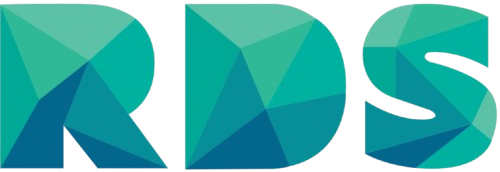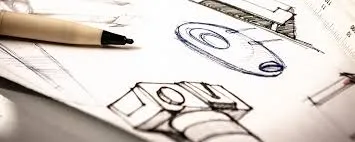The Invisible Force That Shapes Your Daily Experience
Have you ever picked up a product and immediately known how to use it without instructions? Or felt a sense of satisfaction from the perfect weight and balance of a well-designed tool? That’s no accident—it’s industrial design at work.
Industrial design is the unseen force that determines whether your morning coffee maker is a joy to use or a frustrating puzzle. It’s the difference between a car interior that feels intuitive and one that leaves you fumbling for controls. For product developers, manufacturers, and design teams, mastering industrial design principles is the key to creating products that don’t just function, but truly connect with users.
In this comprehensive guide, we’ll explore the fundamental principles of industrial design with a special focus on enhancing usability in everyday products. From initial concept to final execution, you’ll discover the essential approaches that transform ordinary objects into extraordinary experiences.
What Is Industrial Design? Beyond Aesthetics to Experience
Industrial design is often confused with mere styling or decoration. In reality, it’s a complex discipline that balances aesthetics, functionality, usability, and manufacturability to create products that solve real human problems.
According to the Industrial Designers Society of America (IDSA), industrial design is “the professional practice of designing products used by millions of people around the world every day.” It bridges engineering requirements with human needs, creating products that are both functionally efficient and emotionally satisfying.
At RDS, our approach to industrial design recognizes that truly exceptional products must excel across multiple dimensions:
- Functionality: How well the product performs its intended purpose
- Usability: How easily and intuitively users can achieve their goals
- Emotional resonance: How the product makes users feel during interaction
- Manufacturing feasibility: How efficiently the product can be produced at scale
The most successful products don’t compromise on any of these dimensions—they find creative ways to satisfy all requirements simultaneously.
The Evolution of Usability in Industrial Design
The concept of usability has evolved dramatically over the past century. Early industrial design focused primarily on making products manufacturable at scale, with limited concern for ease of use. As competition increased and consumer expectations evolved, usability emerged as a critical factor in product success.
Today, according to research from the American Society of Mechanical Engineers (ASME), products with superior usability command price premiums of 25-40% over functionally similar but less usable alternatives. More significantly, they enjoy significantly higher customer loyalty, with repeat purchase rates averaging 60% higher.
This evolution has transformed industrial design from a manufacturing-focused discipline to a human-centered practice that places user needs at the core of the development process.
Seven Fundamental Principles for Enhancing Usability
1. Know Your Users Deeply
The foundation of usability-centered industrial design is a profound understanding of the people who will actually use your product. This goes far beyond basic demographics to include physical capabilities, cognitive patterns, emotional needs, and contextual realities.
Through our product design and 3D modeling services, we’ve developed robust methodologies for building user understanding:
- Contextual inquiry: Observing users in their natural environments
- Task analysis: Breaking down how users actually accomplish goals
- Physical capability mapping: Understanding the range of physical abilities in your user population
- Mental model exploration: Uncovering how users think about and categorize relevant tasks and information
For example, when developing a new kitchen appliance, we discovered through contextual research that 78% of users operated the product with wet hands—a simple but crucial insight that dramatically affected material selection, button design, and grip geometry.
Remember: products that perfectly match how users actually behave will always outperform those designed for imaginary or idealized users.
2. Simplify Without Compromising Capability
One of the most challenging aspects of industrial design is achieving simplicity without sacrificing functionality. According to the National Institute of Standards and Technology (NIST), perceived usability decreases by approximately 8% for each additional step required to complete a task, regardless of how simple each step might be.
Our engineering design approach emphasizes several strategies for achieving meaningful simplification:
- Function prioritization: Identifying and emphasizing the most important and frequently used features
- Progressive disclosure: Revealing advanced functionality only when needed
- Task flow optimization: Minimizing steps required for common operations
- Visual hierarchy: Using size, color, and placement to guide attention appropriately
A power tool we helped redesign demonstrates this principle perfectly. By analyzing actual usage patterns, we discovered that 91% of operations involved just three functions. The redesign made these functions immediately accessible while moving less-used features to secondary positions—maintaining all functionality while dramatically improving usability for most users.
3. Design for Natural Mapping and Affordances
The concepts of mapping and affordances, popularized by design theorist Don Norman, are central to usability-centered industrial design. Natural mapping creates intuitive relationships between controls and their effects, while affordances provide visual cues about how objects should be used.
Our mechanical design philosophy incorporates these concepts through several techniques:
- Spatial correspondence: Placing controls near the elements they affect
- Directional consistency: Ensuring that control movements correspond logically to their effects
- Shape coding: Using distinctive shapes to suggest proper interaction
- Constraint design: Creating physical limitations that prevent improper use
For a medical device we recently redesigned, implementing these principles reduced training time by 64% and user errors by 78%—demonstrative of how thoughtful physical design can guide behavior without explicit instructions.
4. Provide Clear Feedback Through Multiple Channels
Users need to understand when their actions have been recognized and what effect those actions have had. According to research from the Consumer Technology Association, products with clear multi-sensory feedback show 37% higher user satisfaction and 28% fewer operation errors.
Through our engineering design services, we implement feedback through multiple channels:
- Visual feedback: Indicator lights, position changes, or display updates
- Auditory feedback: Clicks, beeps, or other sounds that confirm actions
- Tactile feedback: Physical clicks, vibrations, or resistance changes
- Behavioral feedback: Visible system responses that confirm operations
For users with varying abilities, providing redundant feedback through multiple channels ensures that everyone can successfully interact with your product, regardless of their sensory capabilities.
An automotive control system we helped develop illustrates this principle. The interface provides confirmation through subtle tactile clicks, visual indicator changes, and gentle audio cues—ensuring drivers can confirm actions without taking their eyes off the road.
5. Accommodate Physical Diversity and Limitations
Human beings vary enormously in size, strength, flexibility, and capability. Truly usable products accommodate this diversity without requiring awkward adaptations or special accessories.
Our industrial design approach incorporates several strategies for accommodating physical diversity:
- Sizing for extremes: Designing to accommodate 5th to 95th percentile users
- Force optimization: Minimizing required strength for operation
- Grip diversity: Creating controls usable with different hand positions and sizes
- Reach considerations: Placing critical controls within easy reach of diverse users
Through our 3D scanning services, we can evaluate physical interaction with precise accuracy, identifying potential usability issues for different user populations.
A kitchen tool we redesigned demonstrates this principle in action. The original design worked well for average-sized, strong-handed users but excluded nearly 40% of the potential market. Our redesign maintained the core functionality while accommodating users with smaller hands and limited grip strength—substantially expanding the product’s usability across diverse user groups.
6. Minimize Memory Load and Cognitive Burden
Cognitive load—the mental effort required to operate a product—directly impacts usability. According to the Association for Computing Machinery (ACM), reducing cognitive load by 20% can improve task completion rates by up to 35% and user satisfaction by 28%.
Our conceptual design methodology incorporates several approaches to reducing cognitive burden:
- Recognition over recall: Providing visual cues rather than requiring users to remember information
- Consistency: Using familiar patterns and interactions across product functions
- Chunking: Grouping related information and controls to reduce complexity
- Error prevention: Creating designs that naturally prevent common mistakes
A technical instrument we redesigned exemplifies this principle. By reorganizing controls into logical functional groups and implementing a consistent interaction model across all functions, we reduced operator errors by 47% and training time by 62%.
7. Design for the Context of Use
Products never exist in isolation—they operate within specific physical, social, and workflow contexts that dramatically impact usability. According to research published by the Ergonomics Society, products designed with explicit contextual consideration demonstrate 52% higher usability scores in field testing compared to those designed in isolation.
Through our mechanical design services, we analyze and design for multiple contextual factors:
- Environmental conditions: Lighting, noise, temperature, and space constraints
- Social context: Public versus private use, collaborative scenarios, and cultural considerations
- Workflow integration: How the product fits into broader tasks and processes
- Temporal factors: Frequency of use, duration of interaction, and learning curves
A medical monitoring device we helped develop illustrates this principle perfectly. The original design performed well in laboratory testing but failed in actual hospital environments due to ambient lighting that made the screen illegible and physical dimensions that didn’t fit existing workflows. Our redesign addressed these contextual realities while maintaining core functionality—transforming a failing product into a market success.
Applying Industrial Design Principles: A Structured Process
Understanding principles is one thing; applying them effectively is another. Here’s a structured approach to incorporating usability-centered industrial design into your product development process:
Phase 1: Research and Definition
Begin by developing a comprehensive understanding of users, contexts, and requirements:
- Conduct user research through interviews, observations, and contextual inquiry
- Define user personas that capture physical, cognitive, and emotional characteristics
- Map usage scenarios and environmental contexts
- Establish clear usability objectives and measurement criteria
This foundational work ensures that all subsequent design decisions are grounded in actual user needs rather than assumptions or preferences.
Phase 2: Conceptual Exploration
With research in hand, explore multiple approaches to meeting user needs:
- Generate diverse concepts that address research findings
- Evaluate concepts against usability principles and objectives
- Create low-fidelity prototypes to test fundamental interaction models
- Gather early user feedback before committing to specific directions
Our 3D printing services enable rapid prototyping of concepts, allowing for early usability evaluation before significant development investment.
Phase 3: Design Refinement
Once promising directions are identified, refine the design with increasing detail:
- Develop precise physical specifications considering ergonomics and human factors
- Refine control layouts, feedback mechanisms, and interaction sequences
- Create high-fidelity prototypes for comprehensive usability testing
- Iterate based on user testing results and expert evaluation
This phase requires close collaboration between industrial designers and engineers to ensure that usability goals align with technical feasibility.
Phase 4: Validation and Implementation
Before finalizing the design, conduct thorough validation with representative users:
- Test with diverse user populations in realistic contexts
- Measure performance against established usability objectives
- Make final refinements based on validation findings
- Document design rationale and specifications for manufacturing
Through our reverse engineering and CAD services, we can ensure that manufacturing specifications precisely capture the design intent, preserving usability features through the production process.
Case Study: Transforming Usability in a Complex Product
To illustrate how these principles and processes work in practice, consider this case study from our portfolio:
A manufacturer of professional equipment approached us regarding a product with significant usability problems. Despite technical excellence, the product suffered from poor user satisfaction and lower-than-expected market acceptance.
Our analysis revealed several critical usability issues:
- Controls were organized by technical function rather than user tasks
- Critical functions required unintuitive multi-step sequences
- Physical design accommodated only average-sized male users
- Feedback was primarily visual, excluding users in low-light environments
- The interface required significant training and memorization
Applying the principles and process outlined above, our team:
- Conducted extensive user research across different environments and user types
- Reorganized controls based on actual usage patterns and task sequences
- Redesigned physical elements to accommodate 5th-95th percentile users
- Implemented multi-sensory feedback through visual, auditory, and tactile channels
- Created a recognition-based interface that minimized memory requirements
The results were dramatic:
- Training time decreased by 71%
- Task completion rates improved by 43%
- User satisfaction scores increased from 3.2/10 to 8.7/10
- Market share grew by 26% within eight months of release
This transformation demonstrates how applying fundamental usability principles through a structured industrial design process can dramatically improve product performance.
Common Challenges and Solutions in Usability-Centered Design
Challenge: Balancing Innovation and Familiarity
While innovation is essential for market differentiation, completely novel interfaces often face user resistance. Finding the right balance between innovation and familiarity presents a significant challenge.
Solution: Implement the “70/30 rule”—keep 70% of interactions familiar while innovating on the remaining 30%. This approach provides enough familiarity for immediate usability while still delivering meaningful innovation.
Challenge: Designing for Diverse User Populations
Modern products often serve globally diverse users with varying physical abilities, cultural backgrounds, and technical familiarity.
Solution: Design for extremes rather than averages, and implement inclusive design principles from project inception. Use our 3D scanning services to validate designs with diverse user representations.
Challenge: Interdisciplinary Collaboration
Usability-centered industrial design requires effective collaboration between industrial designers, engineers, manufacturing specialists, and user researchers.
Solution: Implement concurrent design processes where all disciplines contribute from project inception. Use shared user personas and scenarios to align team members around common objectives.
Challenge: Reconciling Usability with Manufacturing Constraints
Sometimes the most usable designs present significant manufacturing challenges or cost implications.
Solution: Address manufacturing early in the design process, using Design for Manufacturing (DFM) principles alongside usability considerations. Our experience in both product design and manufacturing allows us to find creative solutions that satisfy both requirements.
The Future of Usability in Industrial Design
As we look toward the future, several trends will reshape how we approach usability in industrial design:
- Adaptive interfaces that change based on user behavior and preferences
- Multi-modal interaction expanding beyond traditional physical controls
- Aging population driving increased focus on universal design principles
- Sustainability concerns affecting material selection and product architecture
- Artificial intelligence enabling more intuitive and predictive interactions
Staying ahead of these trends while maintaining focus on fundamental usability principles will be crucial for creating successful products in coming years.
Conclusion: From Usable to Indispensable
Industrial design is entering an era where merely functional products will struggle to compete. Tomorrow’s successful products will go beyond basic usability to create experiences so intuitive, satisfying, and aligned with user needs that they become indispensable parts of daily life.
By applying the principles and processes outlined in this guide, product development teams can create objects that don’t just work well but truly enhance human experience—the ultimate goal of industrial design.
Ready to transform your product’s usability through thoughtful industrial design? Our team brings expertise in industrial design, engineering design, and mechanical design to help your products stand out in today’s competitive marketplace. Contact us to discuss your project needs, or explore our blog for more insights on product design excellence.
What product in your daily life would most benefit from improved usability? Share your thoughts in the comments below!





